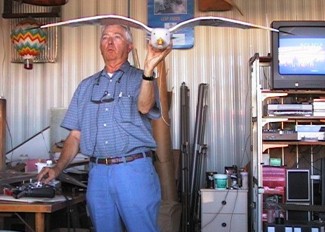
|
Bob Hoey showing the group his Seagull
model.
This gives a good perspective of the complexity of the wing in terms of
the crank and sweep as seen from the in-flight shot provided by
Bob.
This is different than the others in that seagulls don't have the
individual
tip feathers like the raven and turkey vultures. In the left
picture
you can also see that the tips are in line with the leading edge,
however,
Bob says that the model flies best with them at -10 degrees. |
|
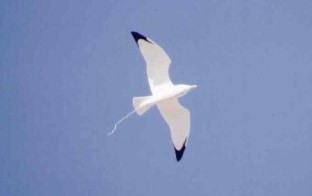
|
| More shots of Bob explaining what it
took to
get the Seagull to fly well. He noted it was very tricky building
the wings with the complex curves, angles, dihedral and,
anhedral.
Right, Bob is demonstrating that the tips can be moved together in
incidence
using the radio's electronic mixer function and, then like ailerons
once
the desired incidence angle is reached. The small rectangle in
the
center of the body is the tab used to hold it under the launching
mother
ship, which folds flush after release. |
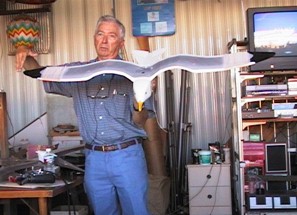
|
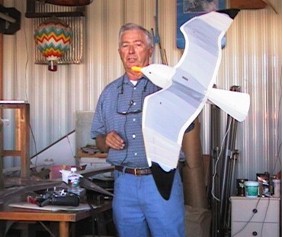
|
|
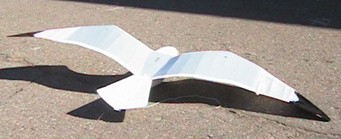
|
Here are a series of shots showing the
Seagull
from different angles. The first version had a flat horizontal
stabilizer,
but Bob says the angled modification hasn't seemed to made any
difference
in performance or controllability. |
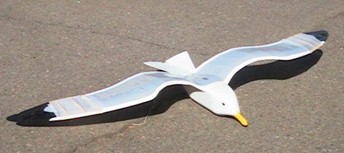 |
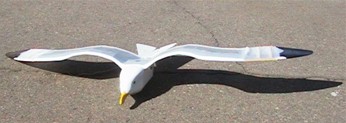
|
| |
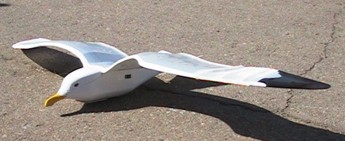
|
| This view shows the parachute cloth
being used
between the main wing section and the moveable tip. Bob thought
that
this might smooth out the flow over the wing while the tip was moving
instead
of there being a butt joint that might be causing interference.
Flight
tests have shown little, if any, improvement in control response.
It was one of those experiments that didn't result in a better
performing
model. |
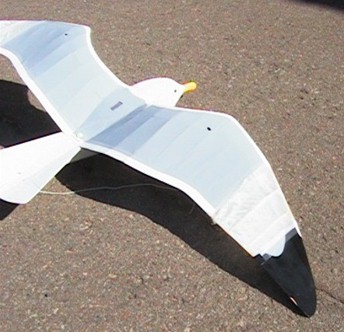
|
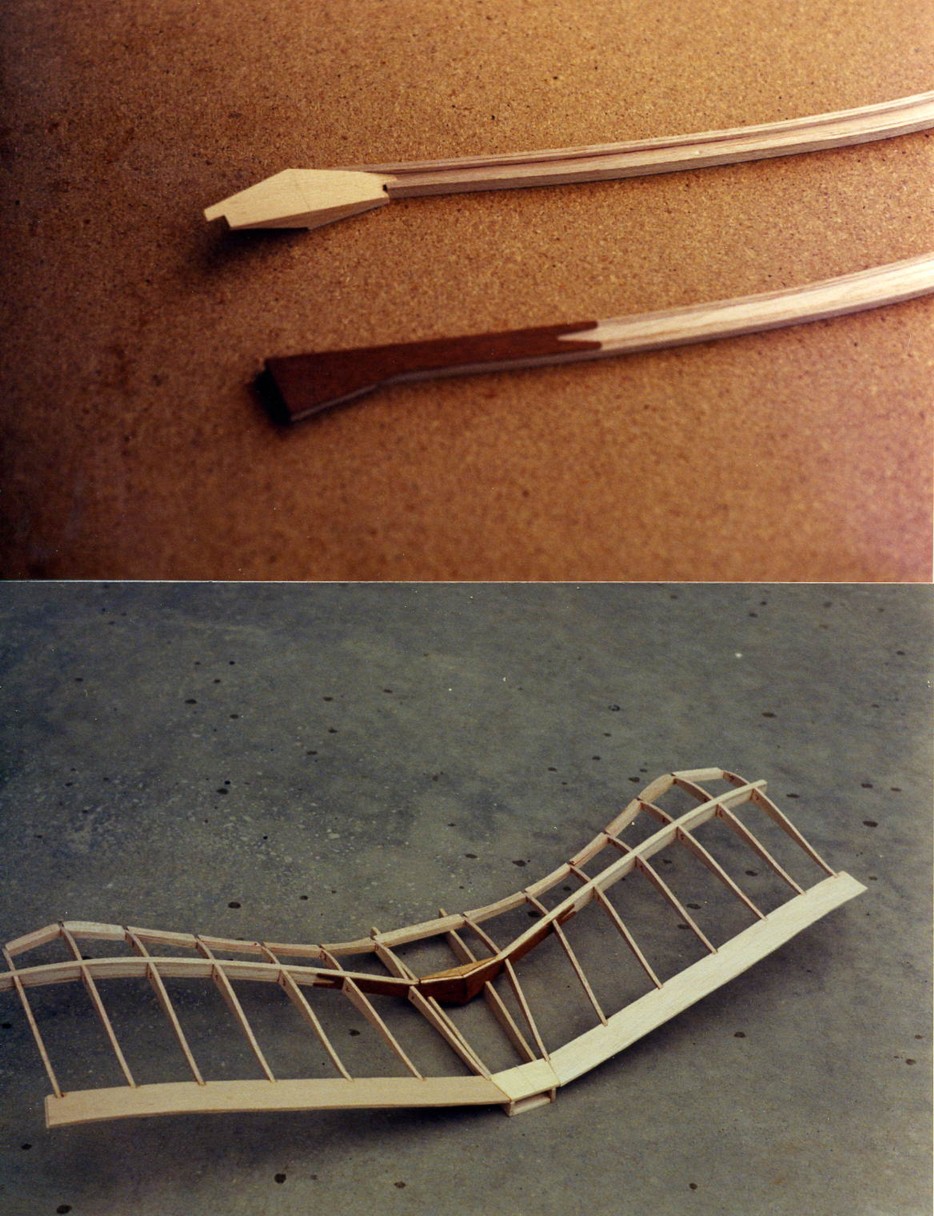
|
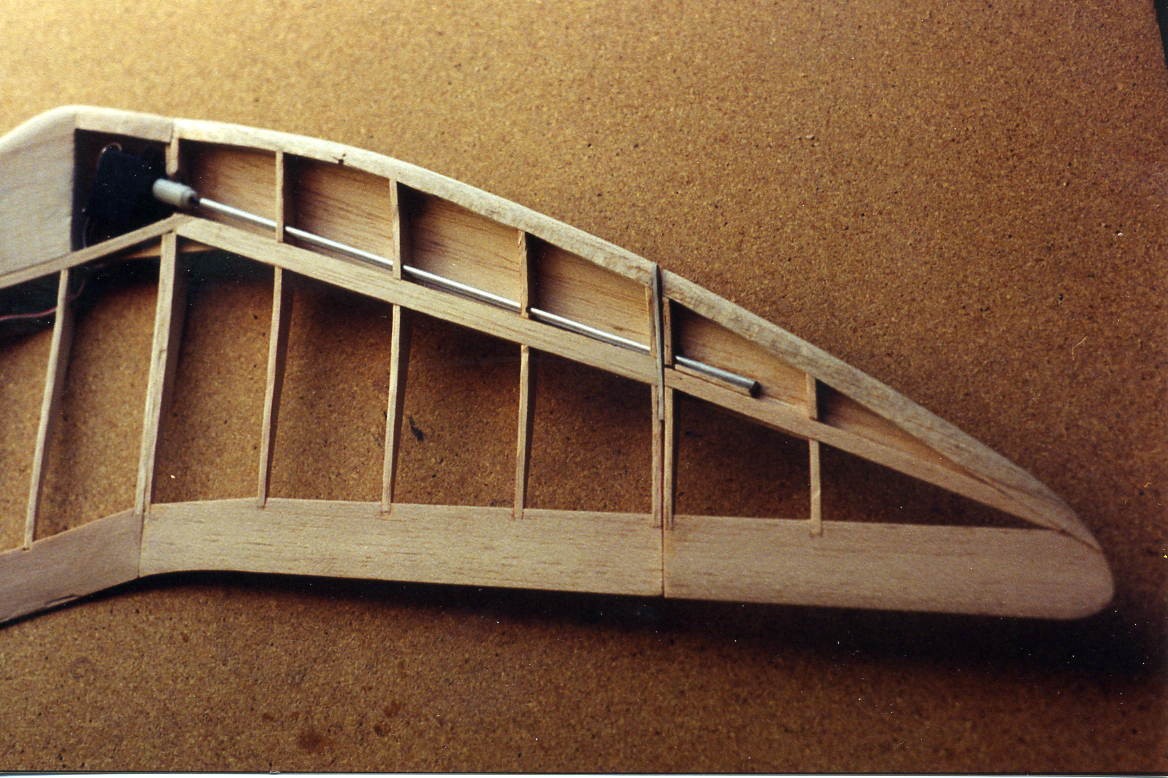
|
Part 1,
Turkey Vulture....
|
Part 3, Pelican...
|
.... ...2/13/08 ...2/13/08 |
Index..........Back
Home....
|








